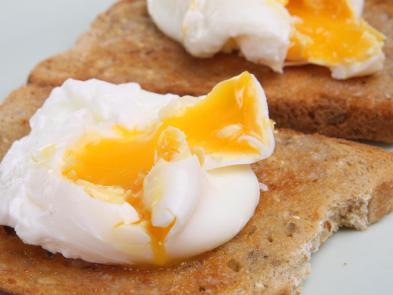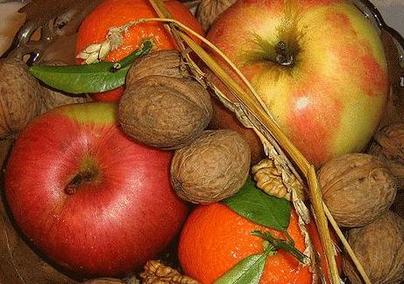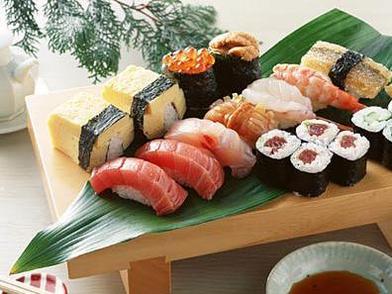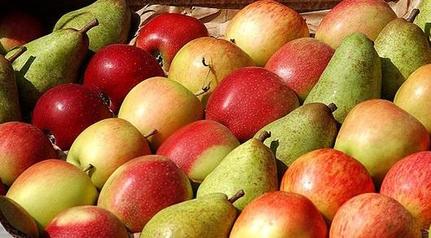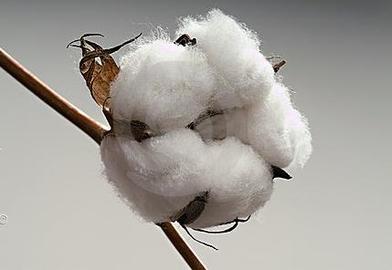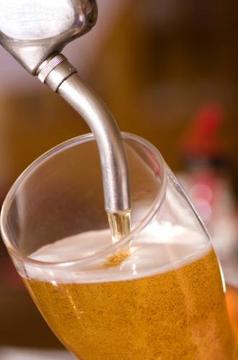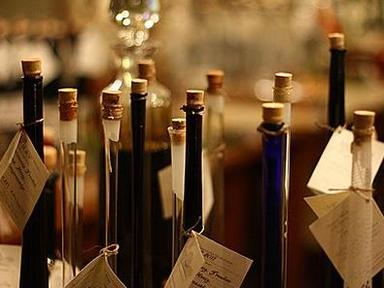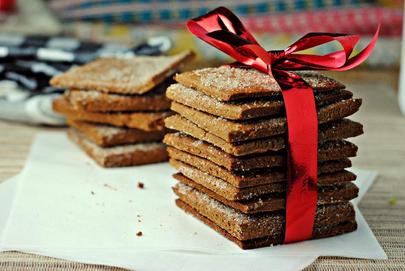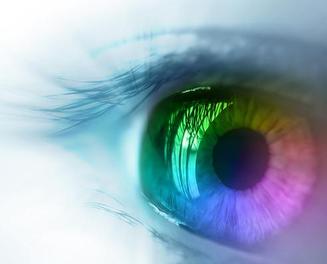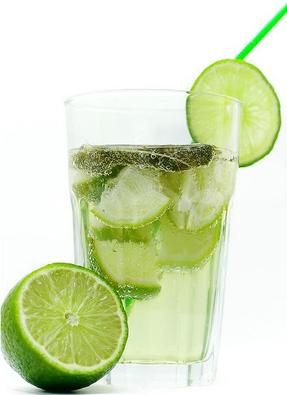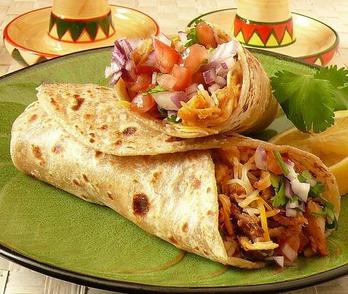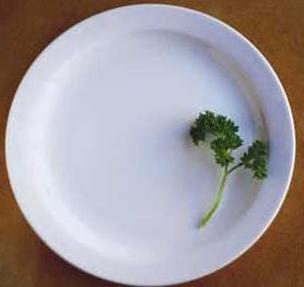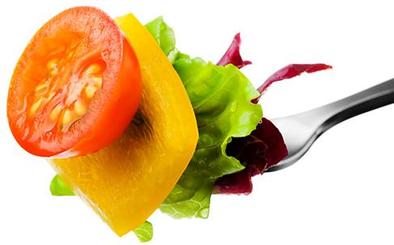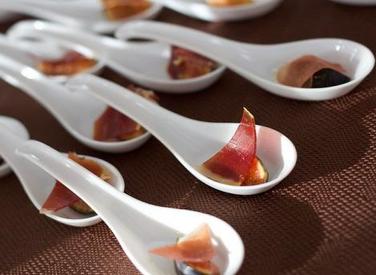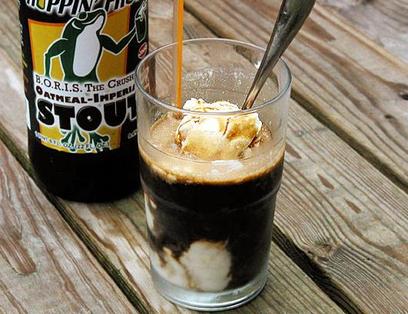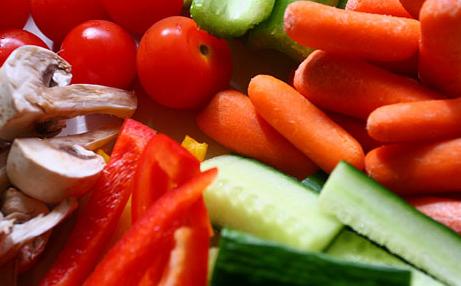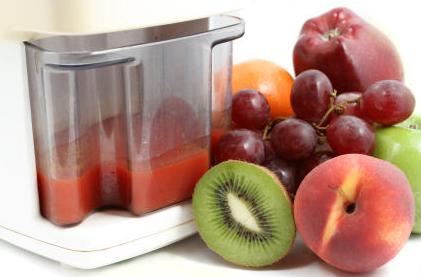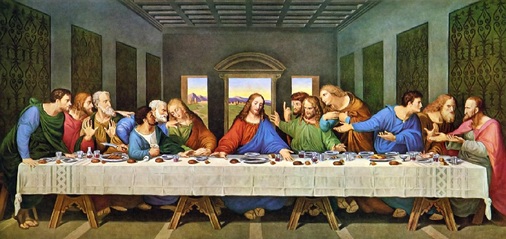SHAPE
01/06/12 material found by Natasha M
25 Weirdest Diets
Japanese Morning-Banana Diet
You have to be early to get a banana these days in Tokyo. Such is the appeal of a new banana diet craze sweeping Japan that importers can no longer satisfy demand for the previously unfashionable staple. Many Japanese have decided the best method is that advocated by Hitoshi Watanabe, 31, a salary man who ballooned after leaving university and entering the rat race - until he discovered the nutritional appeal of the banana. In 2006, his girlfriend Sumiko, a pharmacist with training in Chinese herbal medicine, recommended a simple, stress-free diet that revolved around one straightforward (nutritionists say questionable) premise: a breakfast of raw bananas and room-temperature water can boost the metabolism so much it allows the dieter to eat almost anything for lunch and dinner and still lose weight. Over the next six months he dropped a further 13 kilograms, married Sumiko and posted his story on Mixi, Japan's version of MySpace, to instant acclaim from other desperate dieters.
The story became the first of a series of banana-diet books which have sold more than 600,000 copies - making Hitoshi a publishing sensation. The saturation media coverage has helped drive a huge run on bananas. And since, Tokyo Broadcasting System ran a TV program last month about how the former opera singer Kumiko Mori knocked 7 kilograms off.
The fruit's newfound popularity has been attributed to the simplicity of Hitoshi's weight-loss method. Dieters are expected to dine by 8pm and be in bed by midnight. They should avoid, but not necessarily cut out, alcohol and fatty foods. Best of all: they should feel no obligation to exercise. Although Hitoshi's approach has been endorsed by biomedical expert Dr Noboru Motohashi, who says he lost 12.6 kilograms on a similar fruit diet, it has raised the eyebrows of other nutritionists. "Eating only one kind of food in the long term is not healthy because you cannot get the necessary
25 Weirdest Diets
Japanese Morning-Banana Diet
You have to be early to get a banana these days in Tokyo. Such is the appeal of a new banana diet craze sweeping Japan that importers can no longer satisfy demand for the previously unfashionable staple. Many Japanese have decided the best method is that advocated by Hitoshi Watanabe, 31, a salary man who ballooned after leaving university and entering the rat race - until he discovered the nutritional appeal of the banana. In 2006, his girlfriend Sumiko, a pharmacist with training in Chinese herbal medicine, recommended a simple, stress-free diet that revolved around one straightforward (nutritionists say questionable) premise: a breakfast of raw bananas and room-temperature water can boost the metabolism so much it allows the dieter to eat almost anything for lunch and dinner and still lose weight. Over the next six months he dropped a further 13 kilograms, married Sumiko and posted his story on Mixi, Japan's version of MySpace, to instant acclaim from other desperate dieters.
The story became the first of a series of banana-diet books which have sold more than 600,000 copies - making Hitoshi a publishing sensation. The saturation media coverage has helped drive a huge run on bananas. And since, Tokyo Broadcasting System ran a TV program last month about how the former opera singer Kumiko Mori knocked 7 kilograms off.
The fruit's newfound popularity has been attributed to the simplicity of Hitoshi's weight-loss method. Dieters are expected to dine by 8pm and be in bed by midnight. They should avoid, but not necessarily cut out, alcohol and fatty foods. Best of all: they should feel no obligation to exercise. Although Hitoshi's approach has been endorsed by biomedical expert Dr Noboru Motohashi, who says he lost 12.6 kilograms on a similar fruit diet, it has raised the eyebrows of other nutritionists. "Eating only one kind of food in the long term is not healthy because you cannot get the necessary
The Egg diet
The Egg Diet has become increasingly popular due to reports that some well-known people and celebrities have successfully lost weight by eating only eggs. Apparently, Nigella Lawson's husband Charles Saatchi, lost over sixty pounds by eating nine eggs a day for ten months. There is also discussion that Adrian Brody lost 30 pounds in six weeks in preparation for his role in the Pianist by following the Egg Diet. He has since explained that he actually followed a variation of the diet where he ate eggs for breakfast, a small piece of grilled chicken for lunch and a small piece of fish with steamed vegetables for dinner.
There are several versions of the Egg Diet that are circulating on the Internet. The most popular version of the diet does not actually consist of eating only eggs but it does involve getting the majority of your protein from egg.
The Egg Diet has become increasingly popular due to reports that some well-known people and celebrities have successfully lost weight by eating only eggs. Apparently, Nigella Lawson's husband Charles Saatchi, lost over sixty pounds by eating nine eggs a day for ten months. There is also discussion that Adrian Brody lost 30 pounds in six weeks in preparation for his role in the Pianist by following the Egg Diet. He has since explained that he actually followed a variation of the diet where he ate eggs for breakfast, a small piece of grilled chicken for lunch and a small piece of fish with steamed vegetables for dinner.
There are several versions of the Egg Diet that are circulating on the Internet. The most popular version of the diet does not actually consist of eating only eggs but it does involve getting the majority of your protein from egg.
Sleeping Beauty Diet
As its name implies, this diet involves sleep – a lot of it. The principle behind this diet is: “if you aren't awake, you aren't eating”. Consequently, advocates take heavy sedation and sleep for days at a time in order to lose weight. Obviously the diet works but it is such an unhealthy approach to weight loss that it is insane to try it. Although some researchers have good reason to support this diet. According to them, how much sleep and what quality of sleep we get effects not only our Cortisol levels but also toys with hormones, Leptin and Ghrelin, which trigger our appetite. Both Leptin and Ghrelin influence our appetite and production of these hormones is influenced by how much (or how little) we sleep.
As its name implies, this diet involves sleep – a lot of it. The principle behind this diet is: “if you aren't awake, you aren't eating”. Consequently, advocates take heavy sedation and sleep for days at a time in order to lose weight. Obviously the diet works but it is such an unhealthy approach to weight loss that it is insane to try it. Although some researchers have good reason to support this diet. According to them, how much sleep and what quality of sleep we get effects not only our Cortisol levels but also toys with hormones, Leptin and Ghrelin, which trigger our appetite. Both Leptin and Ghrelin influence our appetite and production of these hormones is influenced by how much (or how little) we sleep.
Breatharianism Diet (eating sunlight)
The Breatharian Diet is based on the inedia principle, which claims that food and water are not necessary to sustain life and that the human body can very well subsist on air, sunlight and Prana (life force) alone. In the US, the Breatharian Institute of America has been promoting the concept of the Breatharian Diet for the past few years, focusing on the spiritual concept of inedia or fasting, although the practice has not been without controversy. In the 90s, a few European followers died when trying to abide by the diet, mostly of dehydration aggravated by the lack of food.
Most Breatharians claim that no food at all is needed to stay alive.
Many believe that just water or herbal teas, combined with sun exposure, are enough to keep them alive. However, many of the people who claim to live a Breatharian life are either reluctant to be examined by doctors or refuse to submit to tests to prove that they have, in fact, avoided solids altogether. Other Breatharians, such as the infamous Wiley Brooks, founder of the Breatharian Institute of America, who claims he subsists on “air and sunlight” most of the time, but that he breaks the fast once in a while by eating a McDonald's burger and a Diet Coke. He explains the choice by saying that junk food provides a specific energetic balance needed to contrarest the clean state he maintains the rest of the time.
The Breatharian Diet is based on the inedia principle, which claims that food and water are not necessary to sustain life and that the human body can very well subsist on air, sunlight and Prana (life force) alone. In the US, the Breatharian Institute of America has been promoting the concept of the Breatharian Diet for the past few years, focusing on the spiritual concept of inedia or fasting, although the practice has not been without controversy. In the 90s, a few European followers died when trying to abide by the diet, mostly of dehydration aggravated by the lack of food.
Most Breatharians claim that no food at all is needed to stay alive.
Many believe that just water or herbal teas, combined with sun exposure, are enough to keep them alive. However, many of the people who claim to live a Breatharian life are either reluctant to be examined by doctors or refuse to submit to tests to prove that they have, in fact, avoided solids altogether. Other Breatharians, such as the infamous Wiley Brooks, founder of the Breatharian Institute of America, who claims he subsists on “air and sunlight” most of the time, but that he breaks the fast once in a while by eating a McDonald's burger and a Diet Coke. He explains the choice by saying that junk food provides a specific energetic balance needed to contrarest the clean state he maintains the rest of the time.
The Bible Diet
The Bible Diet (also known as the Maker's Diet) is a diet promoted on radio and in books by writer and motivational speaker Jordan S. Rubin, who says it is based on teachings from the books of Leviticus and Deuteronomy and other books of the bible, that certain foods are either forbidden (”unclean”) or acceptable (”clean”) to God. The foods incorporated in this diet are organic vegetables, fruits and legumes. The diet also encourages the removal of unclean and unacceptable foods from the individual's diet. This natural, organic approach to eating suggests that one should only eat things created by God in the way they were intended. That means no processed foods or those produced with contact to hormones, pesticides or fertilizers. Rubin claims that his recommendations will enable dieters to concentrate better, and will enhance their moods. He also says that his diet can reduce arthritis pain and inflammation, and can reduce the risk of cancer and heart disease. He also says that it can reverse the "accelerated aging" caused by the way people eat and live today.
The Bible Diet (also known as the Maker's Diet) is a diet promoted on radio and in books by writer and motivational speaker Jordan S. Rubin, who says it is based on teachings from the books of Leviticus and Deuteronomy and other books of the bible, that certain foods are either forbidden (”unclean”) or acceptable (”clean”) to God. The foods incorporated in this diet are organic vegetables, fruits and legumes. The diet also encourages the removal of unclean and unacceptable foods from the individual's diet. This natural, organic approach to eating suggests that one should only eat things created by God in the way they were intended. That means no processed foods or those produced with contact to hormones, pesticides or fertilizers. Rubin claims that his recommendations will enable dieters to concentrate better, and will enhance their moods. He also says that his diet can reduce arthritis pain and inflammation, and can reduce the risk of cancer and heart disease. He also says that it can reverse the "accelerated aging" caused by the way people eat and live today.
Paleolithic Diet
Also called the caveman diet, the Paleolithic diet is a nurtritional plan based on what human species ate about 2.5 million years ago: fish, animals, plants. The rationale for this is that natural selection has adapted Paleolithic humans to the food in that era. But in the 10,000 or so years since we’ve invented agriculture, we’ve drastically changed our diet and have not had time to adapt to it.
Also called the caveman diet, the Paleolithic diet is a nurtritional plan based on what human species ate about 2.5 million years ago: fish, animals, plants. The rationale for this is that natural selection has adapted Paleolithic humans to the food in that era. But in the 10,000 or so years since we’ve invented agriculture, we’ve drastically changed our diet and have not had time to adapt to it.
Fletcherizing
Horace Fletcher earned the nickname “The Great Masticator” by his diet of chewing food thirty thirty two times (about 100 times per minute) before swallowing. After chewing, you would tilt your head back so the food would slide down your throat. Any food leftover, you would have to spit out. Fletcher pushed this to the extreme, suggesting dieters chew their drinks!
Horace Fletcher earned the nickname “The Great Masticator” by his diet of chewing food thirty thirty two times (about 100 times per minute) before swallowing. After chewing, you would tilt your head back so the food would slide down your throat. Any food leftover, you would have to spit out. Fletcher pushed this to the extreme, suggesting dieters chew their drinks!
Fruitarianism
A subset of veganism, fruitarians eat nothing but fruits, nuts and seeds, without meat, vegetables or grain. Some fruitarians believe this was the original diet of Adam and Eve from the Bible, thinking that a return to the food of Eden will in turn lead to a perfect life.
A subset of veganism, fruitarians eat nothing but fruits, nuts and seeds, without meat, vegetables or grain. Some fruitarians believe this was the original diet of Adam and Eve from the Bible, thinking that a return to the food of Eden will in turn lead to a perfect life.
The Cotton Ball Diet
Feeling hungry? Pop a cotton ball. They’re zero calories and they taste great…if you like the taste of nothing. At least they’re bite-sized.
...................
[Ok, this one’s just too stupid for words. The premise is self-explanatory. You are supposed to eat cotton balls to give a false feeling of “fullness.” It’s been practiced by supermodels and dancers (apparently ones with low intelligence) and has occasionally caused death. Duh!]
Feeling hungry? Pop a cotton ball. They’re zero calories and they taste great…if you like the taste of nothing. At least they’re bite-sized.
...................
[Ok, this one’s just too stupid for words. The premise is self-explanatory. You are supposed to eat cotton balls to give a false feeling of “fullness.” It’s been practiced by supermodels and dancers (apparently ones with low intelligence) and has occasionally caused death. Duh!]
The Slimming Soap Diet
In the 1930s, if you couldn’t melt your fat, you could always wash it away with soap products like "Fat-O-NO," and “Fatoff”. Scrub hard, because they turned out to be hand soaps.
In the 1930s, if you couldn’t melt your fat, you could always wash it away with soap products like "Fat-O-NO," and “Fatoff”. Scrub hard, because they turned out to be hand soaps.
The Drinking Man’s Diet
Have a steak and wash it down with a martini. Alcohol is required at every meal and no restrictions on gin and vodka. Robert Cameron sold this diet pamphlet in the 1960s, priced at $1. Within two years he’d sold more than 2 million copies, a best seller. But how many people did he damaged? No idea!
Have a steak and wash it down with a martini. Alcohol is required at every meal and no restrictions on gin and vodka. Robert Cameron sold this diet pamphlet in the 1960s, priced at $1. Within two years he’d sold more than 2 million copies, a best seller. But how many people did he damaged? No idea!
The Vinegar Diet
Lord Byron was accused of anorexia and bulimia, but that didn’t stop him from popularizing the vinegar diet in the 1820s. His basic idea: Drink plenty of vinegar daily, plus one cup of tea and one raw egg. Side effects include vomiting and diarrhea.
Lord Byron was accused of anorexia and bulimia, but that didn’t stop him from popularizing the vinegar diet in the 1820s. His basic idea: Drink plenty of vinegar daily, plus one cup of tea and one raw egg. Side effects include vomiting and diarrhea.
The Graham Diet
In 1830, Sylvester Graham was a Presbyterian minister and early vegetarian who believed people were fat because they had too much sex. Although his diet of abstinence and veggies didn’t last long, he’s known today as the father of graham crackers.
In 1830, Sylvester Graham was a Presbyterian minister and early vegetarian who believed people were fat because they had too much sex. Although his diet of abstinence and veggies didn’t last long, he’s known today as the father of graham crackers.
The Vision Diet
The color blue is supposed to suppress appetite. So if you want to eat less, wear blue glasses. Everywhere. Just think of your life as one long 3D movie.
The color blue is supposed to suppress appetite. So if you want to eat less, wear blue glasses. Everywhere. Just think of your life as one long 3D movie.
The Master Cleanser Diet
Also called the “Lemonade Diet” or the “Liquid Diet,” this diet was made popular by Stanley Burroughs in 1976. It consists solely of a liquid diet of water, lemon or lime juice, maple syrup, and cayenne pepper. Followers may only drink lemonade about 6-12 times a day, a glass of salt water, and an herbal laxative tea once or twice a day. It’s supposed to detoxify the body, and was originally intended for that purpose, but re-emerged in 2004 as a weight loss diet. It might be safe for a day or two, but most doctors say following this diet for any length of time greater than that may be hazardous to your health.
Also called the “Lemonade Diet” or the “Liquid Diet,” this diet was made popular by Stanley Burroughs in 1976. It consists solely of a liquid diet of water, lemon or lime juice, maple syrup, and cayenne pepper. Followers may only drink lemonade about 6-12 times a day, a glass of salt water, and an herbal laxative tea once or twice a day. It’s supposed to detoxify the body, and was originally intended for that purpose, but re-emerged in 2004 as a weight loss diet. It might be safe for a day or two, but most doctors say following this diet for any length of time greater than that may be hazardous to your health.
The Burrito Diet
Behold the power of the burrito! Wrap it in a tortilla, and call it diet food. With a strategy similar to Subway sandwich spokesman Jared Fogel, overweight Matt Lisk reportedly lost 80 pounds in eight months by eating burritos from Chipotle. He wrote a book called The Burrito Diet and has managed to keep off the weight. Allegedly.
Behold the power of the burrito! Wrap it in a tortilla, and call it diet food. With a strategy similar to Subway sandwich spokesman Jared Fogel, overweight Matt Lisk reportedly lost 80 pounds in eight months by eating burritos from Chipotle. He wrote a book called The Burrito Diet and has managed to keep off the weight. Allegedly.
The Air Diet
Pretend eating: it's the new...eating. Dieters dish up a plate, use a fork and knife, and bring real food up to their mouth, but don't actually eat it. By mimicking the act of eating, they claim to feel satisfied. However, dieters are allowed to eat unlimited amounts of water “soup”. Thankfully, it's easy to make (the only ingredients are water and salt), so starving dieters are unlikely to collapse from the effort it takes to whip up a steaming bowl of NOTHING.
Pretend eating: it's the new...eating. Dieters dish up a plate, use a fork and knife, and bring real food up to their mouth, but don't actually eat it. By mimicking the act of eating, they claim to feel satisfied. However, dieters are allowed to eat unlimited amounts of water “soup”. Thankfully, it's easy to make (the only ingredients are water and salt), so starving dieters are unlikely to collapse from the effort it takes to whip up a steaming bowl of NOTHING.
Forking Diet
This diet should be called the “Fork That Diet” instead. Dieters are only allowed to eat food that can be prepared and eaten with a fork. No slicing, dicing, spreading, grating, rolling, or scooping, which is meant to prevent eating calorie laden condiments, big hunks of red meat, carb-laden breads, or other dieting distractions.
This diet should be called the “Fork That Diet” instead. Dieters are only allowed to eat food that can be prepared and eaten with a fork. No slicing, dicing, spreading, grating, rolling, or scooping, which is meant to prevent eating calorie laden condiments, big hunks of red meat, carb-laden breads, or other dieting distractions.
The Five-Bite Diet
This diet is a lesson in extreme portion control. By eating five bites of any food you want three times a day, you'll be svelte in no time—and are likely to develop an eating disorder.
This diet is a lesson in extreme portion control. By eating five bites of any food you want three times a day, you'll be svelte in no time—and are likely to develop an eating disorder.
The Beer and Ice Cream Diet
Eat all the ice cream and beer you want on this Homer Simpson-inspired diet, which is based on the theory that your body has to work harder to digest cold foods, burning more calories. Save time, and have a Guinness float! But can the energy expended on digestion possibly burn off all the extra calories consumed eating only beer and ice cream?
Eat all the ice cream and beer you want on this Homer Simpson-inspired diet, which is based on the theory that your body has to work harder to digest cold foods, burning more calories. Save time, and have a Guinness float! But can the energy expended on digestion possibly burn off all the extra calories consumed eating only beer and ice cream?
The Facial Analysis Diet
A specialized facial doctor can look at your face, eyes and hair and know what you need to eat for optimal health and weight loss, down to which vitamins and minerals you're lacking. Weight loss can probably be attributed to the fact that dieters are typically directed to eat more vegetables and drink more water—which makes perfect sense. But do you really need a fancy doctor to tell you that?
A specialized facial doctor can look at your face, eyes and hair and know what you need to eat for optimal health and weight loss, down to which vitamins and minerals you're lacking. Weight loss can probably be attributed to the fact that dieters are typically directed to eat more vegetables and drink more water—which makes perfect sense. But do you really need a fancy doctor to tell you that?
Ear Stapling
Somehow stapling a certain part of your ear cartilage supposedly helps with appetite control, and can even help you stop smoking by reducing cravings. Maybe because it hurts?
Somehow stapling a certain part of your ear cartilage supposedly helps with appetite control, and can even help you stop smoking by reducing cravings. Maybe because it hurts?
Cabbage Soup Diet
This diet is all about cabbage soup, and pretty much nothing else. For seven days you eat only cabbage soup, in combination with a limited number of fruits, vegetables and meat. Even though some research has shown that consuming a broth before a meal can encourage you to consume fewer calories, the cabbage soup diet is basically a starvation diet. But though you’ll be hungry and miserable for a few days, the only weight you will lose with this diet is water weight.
This diet is all about cabbage soup, and pretty much nothing else. For seven days you eat only cabbage soup, in combination with a limited number of fruits, vegetables and meat. Even though some research has shown that consuming a broth before a meal can encourage you to consume fewer calories, the cabbage soup diet is basically a starvation diet. But though you’ll be hungry and miserable for a few days, the only weight you will lose with this diet is water weight.
Martha’s Vineyard Diet
This diet functions on the principle that it is healthier to eat foods in liquid form. So for this diet you only eat foods that you can suck through a straw, and most of your choices are fruit and vegetables. This diet has three plans a 21 day diet (recommended once a year), a 7 day program (recommended once a month) and a 2 day program (recommended once a week). Unfortunately science has proven that whole foods are actually better for you. Not to mention this diet also recommends regular enemas…which coupled with a liquid diet, does not sound at all like fun.
This diet functions on the principle that it is healthier to eat foods in liquid form. So for this diet you only eat foods that you can suck through a straw, and most of your choices are fruit and vegetables. This diet has three plans a 21 day diet (recommended once a year), a 7 day program (recommended once a month) and a 2 day program (recommended once a week). Unfortunately science has proven that whole foods are actually better for you. Not to mention this diet also recommends regular enemas…which coupled with a liquid diet, does not sound at all like fun.
The Jesus Diet
One of the oldest diets in history – if you believe the Jesus diet website. The proponents of this eating regime claim that almost all diseases and pains can be healed by prayer and fasting. You are only allowed to eat raw food (excluding meat) and, even then, dine only twice a day at the most. These two meals have to be restricted to one or two pounds (there seems to be no biblical justification for this restriction, however). To top it off, fasting completely for at least one day a week is recommended. The rationale being that if you have the energy to feel anything at all (including pain) after eating like this, then you must truly be touched by the Lord.
One of the oldest diets in history – if you believe the Jesus diet website. The proponents of this eating regime claim that almost all diseases and pains can be healed by prayer and fasting. You are only allowed to eat raw food (excluding meat) and, even then, dine only twice a day at the most. These two meals have to be restricted to one or two pounds (there seems to be no biblical justification for this restriction, however). To top it off, fasting completely for at least one day a week is recommended. The rationale being that if you have the energy to feel anything at all (including pain) after eating like this, then you must truly be touched by the Lord.
Displaying page: Good Advice Magazine >> Health and Beauty >> Shape >> 10
Shape other articles: << 19 18 17 16 15 14 13 12 11 10 09 08 07 06 05 04 03 02 01
Shape other articles: << 19 18 17 16 15 14 13 12 11 10 09 08 07 06 05 04 03 02 01
|
|


